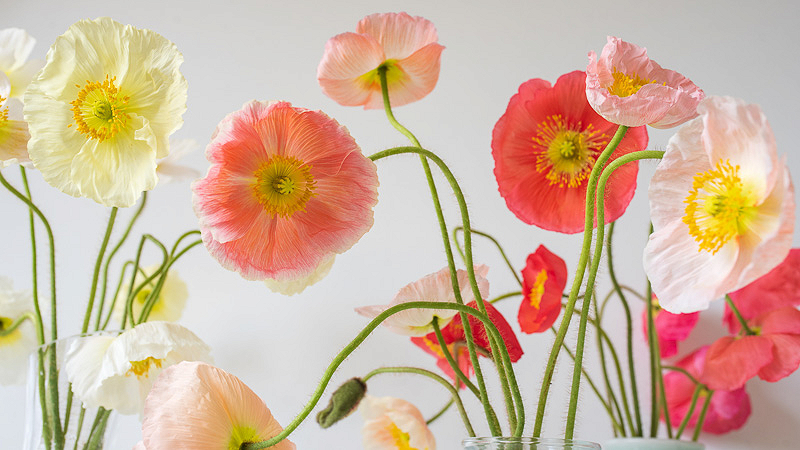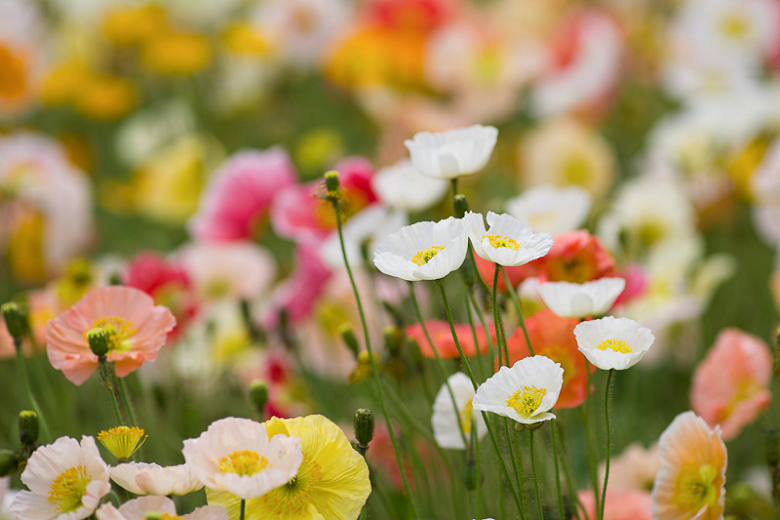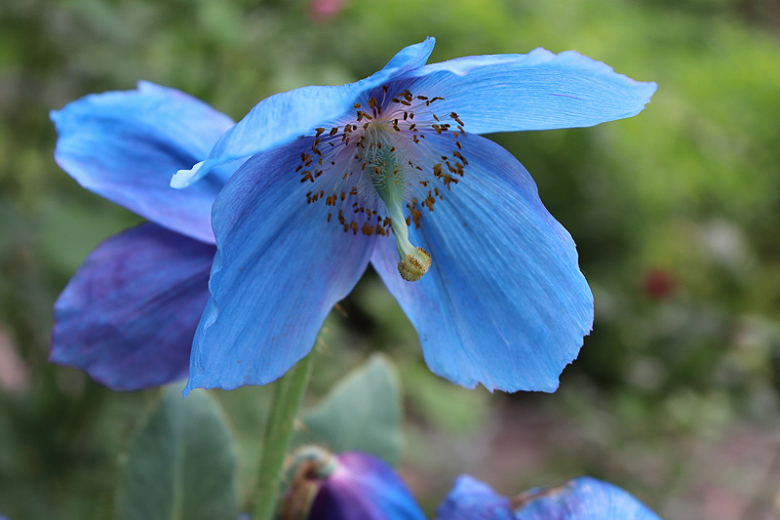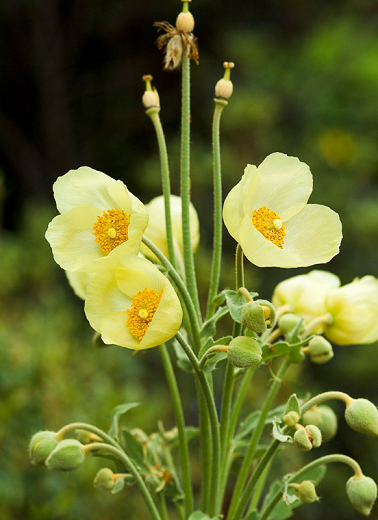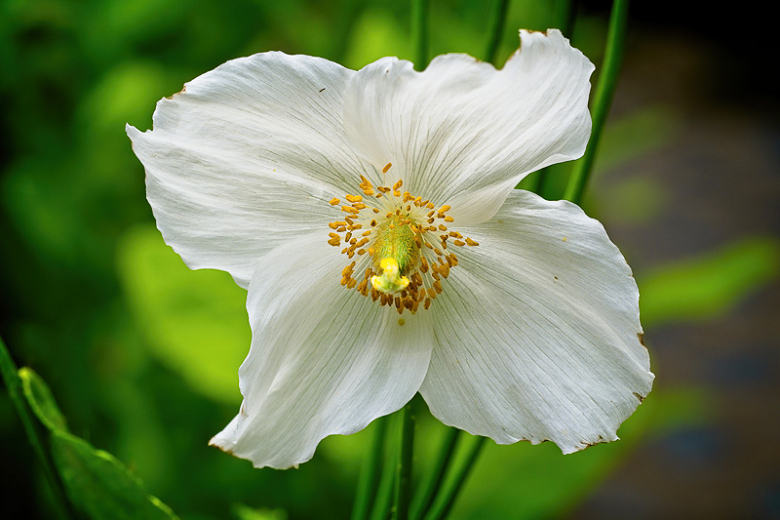Papaver nudicaule (Iceland Poppy)
Papaver nudicaule (Iceland Poppy) is a biennial or short-lived perennial boasting large, delicately fragrant, saucer-shaped flowers, up to 4 in. across (10 cm), adorned with crinkled petals and golden stamens. Blooming from late spring to early summer, the spectacular blossoms, in shades of white, yellow, orange, salmon, rose and pink, seem to float amid the garden on their fuzzy leafless stems. They rise above a small, basal rosette of moss-green, pinnately lobed leaves. Hardy and fast-growing, the satiny blossoms are extremely attractive to bees, honey bees, bumblebees, and other pollinators and beneficial insects. Iceland Poppies thrive in subarctic regions but are often planted as annuals in warmer climates. They are stunning en masse or drifting through cottage or wild gardens. Iceland poppies are also amongst the best poppies for cutting, as they last for several days in the vase.
- Grows up to 12-24 in. tall and wide (30-60 cm).
- Prefers full sun to very light shade in organically rich, moderately fertile, evenly moist, well-drained soils. Iceland Poppy thrives in climates with cool summer temperatures, but struggles in hot and humid conditions.
- A pretty addition to beds and borders, city gardens, or cottage gardens. Excellent cut flower for fresh arrangements.
- Easy to grow and virtually carefree.
- No serious pest or disease issues. Keep an eye out for aphids and downy mildew.
- Removing faded flowers will encourage more buds to form.
- Cut back after flowering.
- Propagate by seed sown in spring.
- Papaver nudicaule is native to subpolar regions of Asia and North America, and the mountains of Central Asia as well as temperate China (but not in Iceland).
- All parts of this plant contain toxic alkaloids. They are likely to be poisonous to mammals, though the toxicity would be low.
Requirements
| Hardiness | 2 – 7 |
|---|---|
| Heat Zones | 2 – 9 |
| Climate Zones | 1, 1A, 1B, 2, 2A, 2B, 3, 3A, 3B, 4, 5, 6, 10, A2, A3 |
| Plant Type | Annuals, Perennials |
| Plant Family | Meconopsis – Himalayan Poppy, Papaver – Poppies |
| Exposure | Full Sun |
| Season of Interest | Spring (Late)Summer (Early) |
| Height | 1' – 2' (30cm – 60cm) |
| Spread | 1' – 2' (30cm – 60cm) |
| Spacing | 6″ – 8″ (15cm – 20cm) |
| Water Needs | Average |
| Maintenance | Low |
| Soil Type | Chalk, Loam, Sand |
| Soil pH | Acid, Alkaline, Neutral |
| Soil Drainage | Well-Drained |
| Characteristics | Cut Flowers, Fragrant, Showy |
| Native Plants | United States, Alaska, Northeast, Maryland, Rocky Mountains, Utah |
| Attracts | Bees, Butterflies |
| Garden Uses | Beds and Borders |
| Garden Styles | City and Courtyard, Informal and Cottage |
